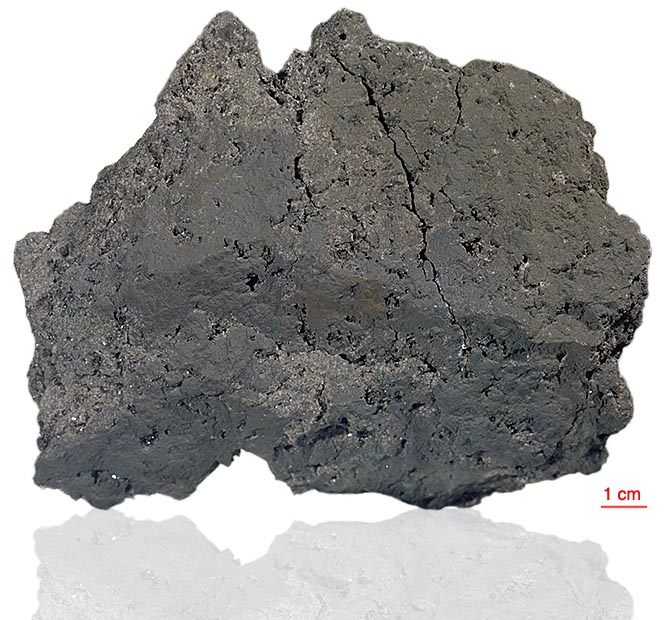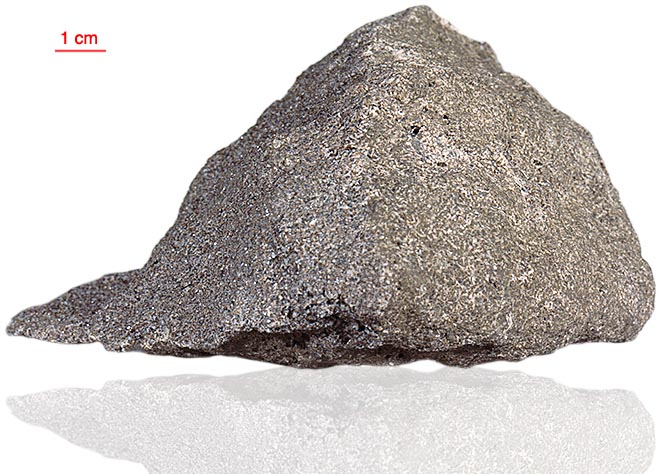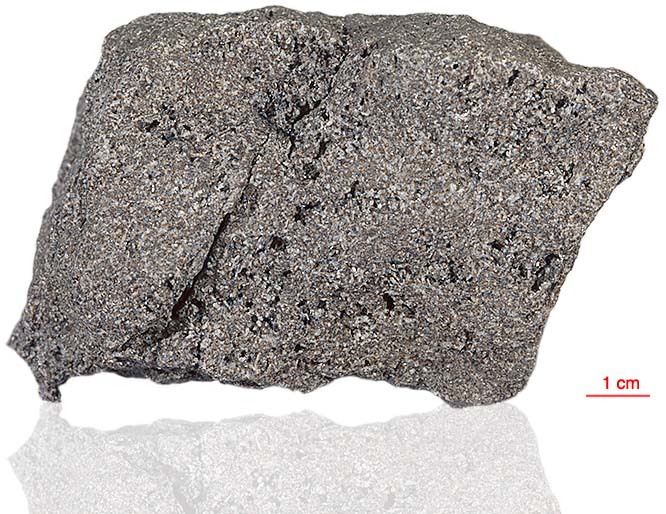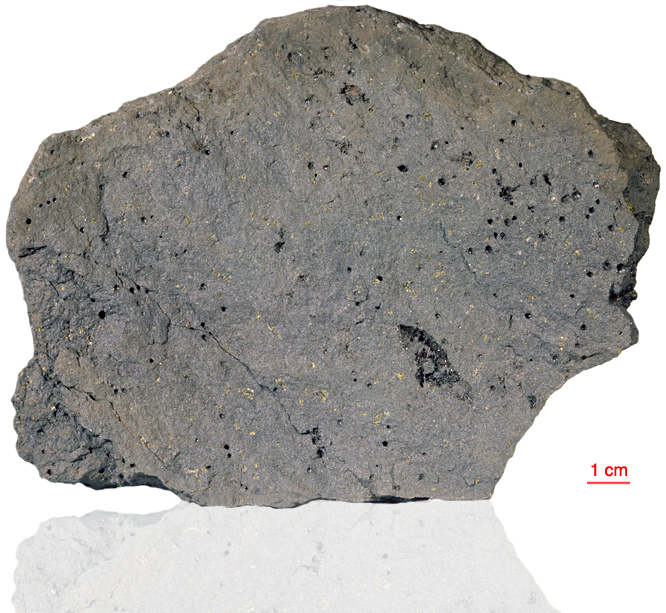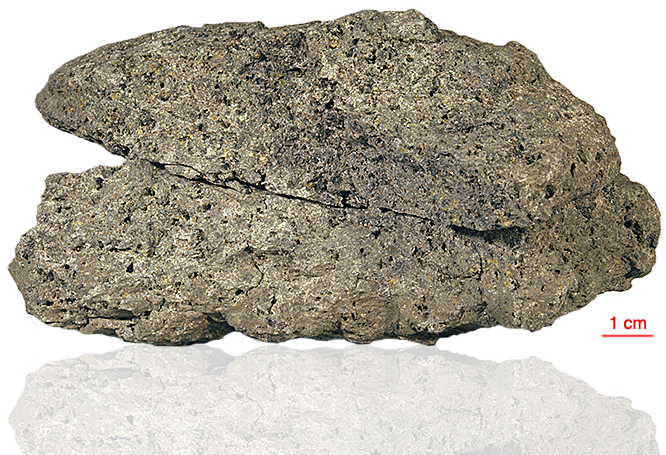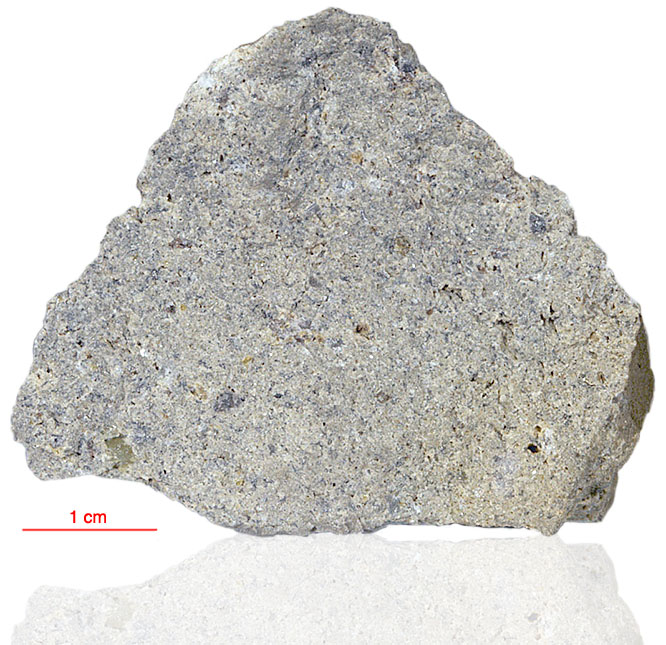
Fact sheet
72375 was collected from the same boulder as 72315, 72335, 72355 and 72395. It is a fine-grained, clast-bearing impact melt breccia with a poikilitic texture and about 80% of crystalline matrix. Plagioclase and pigeonite are the most abundant clasts. The few large lithic clasts are typically fine-grained feldspathic rocks. The groundmass contains abundant vesicles smaller than 25 microns, and consists mainly of plagioclase and pigeonite. The pigeonite forms small oikocrysts (less than 100 microns). The smaller clasts are difficult to distinguish from groundmass phases.
The sample weighed 16.16 grams before analysis and has not been dated (although it is likely to be ~ 3.9 billion years old).
A transcript of the dialogue between astronauts Eugene A. (Gene) Cernan (CDR) and Harrison P. (Jack) Schmitt (LMP) as they sampled this boulder is available on the Lunar and Planetary Institute site.
Further details of this and other Apollo samples are here: http://curator.jsc.nasa.gov/lunar/
Apollo 17, the final manned landing mission, had two objectives: to obtain samples of ancient rocks from the lunar highlands and to look for evidence of younger volcanic activity on the valley floor.
This small Collection contains material deriving from both periods, including igneous rocks around 4.3 billion years old from the lunar highlands as well as younger volcanic samples dating from about 3.6 billion years ago.
Apollo 17 was launched on 7 December 1972.

